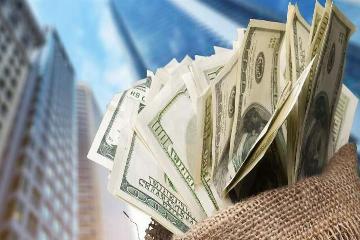US Stocks Plunge as Fears Mount
Advertisements
In the early hours, the Federal Reserve's hawkish stance echoed loudly.
1
On a day when the US stock market was soaring to new heights, a sudden dramatic downturn occurred.
On January 5th, the three major US indices faced a sharp decline as the trading day drew to a close.
The Dow Jones Industrial Average briefly hit a day low of 36,400.39, a staggering drop of 552.26 points from its peak of 36,952.65 that day.
The S&P 500 index fell by 1.94%.
The Nasdaq Composite dropped by 3.34%, marking its highest single-day percentage loss in over ten months.
Tech giants suffered even more severe declines.
Apple saw a decrease of 2.66%, resulting in a loss of $78.4 billion in market value, roughly equivalent to 500 billion yuan.
Tesla's stock plunged by 5.35%, wiping out $61.6 billion in market capitalization, which is about 392 billion yuan.
Additionally, Amazon fell by 1.89%, Google by 4.68%, Netflix by 4%, and Microsoft by 3.84%. In the semiconductor sector, Qualcomm dipped by 0.39%, AMD fell by 5.73%, and NVIDIA by 5.76%.
This sharp decline in the US market was not without warning.
Since 2009, the US stock market has maintained an impressive bull run for nearly 13 years, with only brief adjustments that were quickly followed by new highs.
The Nasdaq Composite index has skyrocketed from around 1500 to its current level of over 15,100, an increase of tenfold
Advertisements
In particular, in the last three years, it showed extraordinary growth rates of 35.23%, 43.64%, and 21.28%.
With the US stock market continually setting new highs, even a slight breeze from macroeconomic factors can elicit significant volatility.
The only pin that could pop this stock market bubble is the Federal Reserve's interest rate hikes.
On January 5, the Fed released the minutes from its December FOMC monetary policy meeting: the reduction of its balance sheet could occur faster than previously anticipated, with some Fed officials aiming to start this process shortly after the rate hikes.
The Fed is adopting a more hawkish tone than previously expected, with possible rate hikes occurring earlier than anticipated.
Even previously dovish representatives, such as Minneapolis Fed's Kashkari, who believed rates should remain near zero at least until 2024, are now anticipating two interest rate hikes this year due to persistently high inflation.
The primary reason for the Fed's confidence in raising interest rates is the ongoing improvement in US employment numbers.
In December 2021, the US private sector added 807,000 jobs, exceeding industry economists' predictions of a 400,000 job increase.
The US job numbers in December marked the fastest growth in nearly seven months.
2
The impressive 13-year bull market in US stocks has been supported not just by the robust domestic economy and technology innovations, but also significantly by substantial quantitative easing from the Federal Reserve.
A former US president, who viewed the rising US stock market as a personal achievement, pressured Chairman Powell to halt interest rate hikes, favoring drops and monetary easing during his tenure
Advertisements
Particularly, in December 2018 and March 2020, he single-handedly rescued the US stock market from the brink of disaster, lifting it back to new heights.
Thus, while the causes behind the stock market rise stem from easy monetary policy, the greatest risk of a crash originates from the Fed's tapering.
The faster and more aggressive the Fed raises interest rates, the more violently the stock market bubble will burstWhen the Fed begins to hike rates meaningfully, the stock market will enter a genuine danger zone.
All of this is traceable in the market's movements
Advertisements
The US swap market shows an 80% chance of the Fed raising rates in March.
Is March that far away? Counting the days, it is merely two months from now.
This pace is faster than current market expectations, indicating that true danger for US stocks is approaching swiftly!
Of course, it is unlikely that the Fed's elite are oblivious to this issue; they constantly engage in verbal management of interest rates to manage expectations and gradually release the risks of stock market bubbles
- Focus on Financial Service Details
- Unveiling Quantum Stock Volatility
- Currency or Stocks: A Policy Dilemma
- Bank of Korea Maintains Interest Rate at 3%
- Digitalization Boosts Sino-Arab Energy Ties
By the time actual rate increases occur, the market will have developed a sufficient understanding and adjustment, preventing an instant crash.
In reality, interest rate hikes represent a gamble for the US: if the US economy can indeed sustain its recovery, the Fed would have hit the jackpot, pushing economic growth to new heights after yet another round of extracting wealth from other countriesConversely, if the gamble fails, it risks dragging the nascent recovery back into the mire, necessitating a complete reset.
Whether the Fed truly hikes rates or merely uses rhetoric, as 2022 begins, both the US and Chinese stock markets finally find themselves in synchronization.
Whether the A-shares negatively influenced the US stocks or vice versa, as investors, we hope to avoid any “misery mode” because the A-share retail investors have already been through enough hardship!
Ultimately, the significant drop in US stocks may indeed be a boon for A-shares: after all, it potentially accelerates our own adjustment timeline, bringing us to the bottom sooner!

Leave a Reply
Your email address will not be published. Required fields are marked *